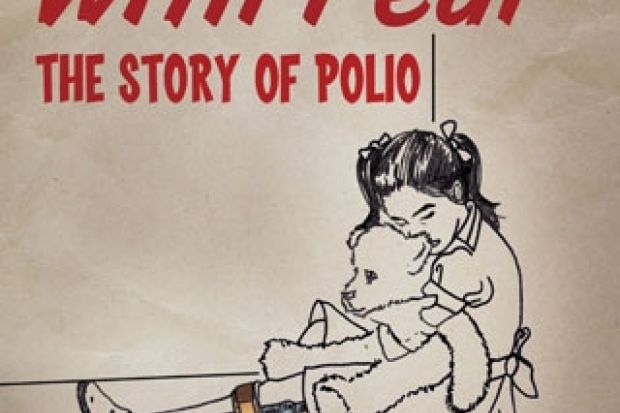Born in the comfort of the UK in the age of effective vaccination, polio for me meant Ian Dury, frontman of punk-era band the Blockheads. After becoming infected with the poliovirus in a swimming pool aged seven, he was left with a withered left arm and leg. In the terminology of the time, he was a “cripple”. Dury was also a disability advocate, actor and artist, and latterly a pro-vaccination and anti-discrimination ambassador for Unicef until his death in 2000 from cancer.
Dury’s polio generation features near the close of Gareth Williams’ absorbing new history of the disease. It is preceded by a thorough dissection of the science of the poliovirus, its clinical course and the abortive therapies against the disease in the pre-vaccine era. After a brief résumé of its pre-20th century history, Williams concentrates his gaze on the US, for it is here, he argues, that “the crippler” took on a persona that far exceeded its significance as a cause of mortality. From the early 20th century onwards, with children as polio’s main victims, it seemed that school holidays were to be forever blighted by the spectre of iron lungs and leg frames. North America did suffer notable outbreaks, so the potential terror of the summer months was perhaps understandable. But, as personal accounts are woven into the story with consummate skill, Williams shows how the fear of polio was whipped up, if not manufactured, in the US. It came to be perceived as a peculiarly American problem that American genius would solve.
There is much to question in the ethics of the early trials involving institutionalised children who could not give informed consent
In this vein a key player is Simon Flexner, the first director of the Rockefeller Institute for Medical Research in New York City. Flexner and the Rockefeller were part of a concerted drive to turn the US into a world leader in the medical sciences, but he looks far from heroic here. Although the poliovirus is most commonly spread by the faecal-oral route, droplet infection in the early stages is also possible. On this basis Flexner developed the idea that the poliovirus’ main point of entry into the central nervous system was via the olfactory nerves that travel from the nose into the brain. He proved this to his satisfaction by subjecting large numbers of primates to unpleasant procedures. Swabs laced with poliovirus were forced high up into the nasal cavity and apparently led to paralytic polio as readily as when it was directly injected into the brain. When various astringent chemicals were swabbed in the same manner into this delicate, hypersensitive part of the body, the procedure seemed to prevent the disease taking hold in primed animals. It was a quick step from the laboratory to trials involving susceptible children in Alabama in 1934, but the results disappointed. Williams’ dressing-down of Flexner is as caustic as the chemicals the great man used, and Flexner is anything but an isolated example of the use of poor science and large egos to the detriment of polio science and its victims. The Polio Hall of Fame Wall in the Roosevelt Warm Springs Institute is also a rogues’ gallery.
The Alabama trials were funded by the National Foundation for Infantile Paralysis (March of Dimes), the charity founded by arguably the world’s most famous polio victim, President Franklin D. Roosevelt. Roosevelt’s illness and the birth of the charity are briefly recounted, but more useful light is shed on the NFIP’s funding decisions, the role of Basil O’Connor (co-founder of the charity with Roosevelt) and the internecine warfare among some of the recipients of grants. This gathers pace as Williams exposes the early attempts at a vaccine. Jonas Salk and Albert Sabin share this story with less well-known players in what appears to have been a highly competitive mud-slinging enterprise. Despite the success of Salk and Sabin’s vaccines (notwithstanding the vaccine-induced cases), there is much to question in the ethics of the early trials, which involved institutionalised children who could not give informed consent.
Williams hoped to end with “a pithy epitaph”. Despite substantial overruns in time and money, the world is close to eradicating polio. The announcement that the Taliban has decided to support, rather than shoot, vaccinators is good news. But what eradication will leave, Williams says, is a global population vulnerable to chance mutations in the originating Coxsackie virus or the production of a synthetic version of one of the severe strains: sobering thoughts.
Paralysed with Fear: The Story of Polio
By Gareth Williams
Palgrave Macmillan, 336pp, £20.00
ISBN 9781137299758
Published June 2013
Register to continue
Why register?
- Registration is free and only takes a moment
- Once registered, you can read 3 articles a month
- Sign up for our newsletter
Subscribe
Or subscribe for unlimited access to:
- Unlimited access to news, views, insights & reviews
- Digital editions
- Digital access to THE’s university and college rankings analysis
Already registered or a current subscriber? Login




